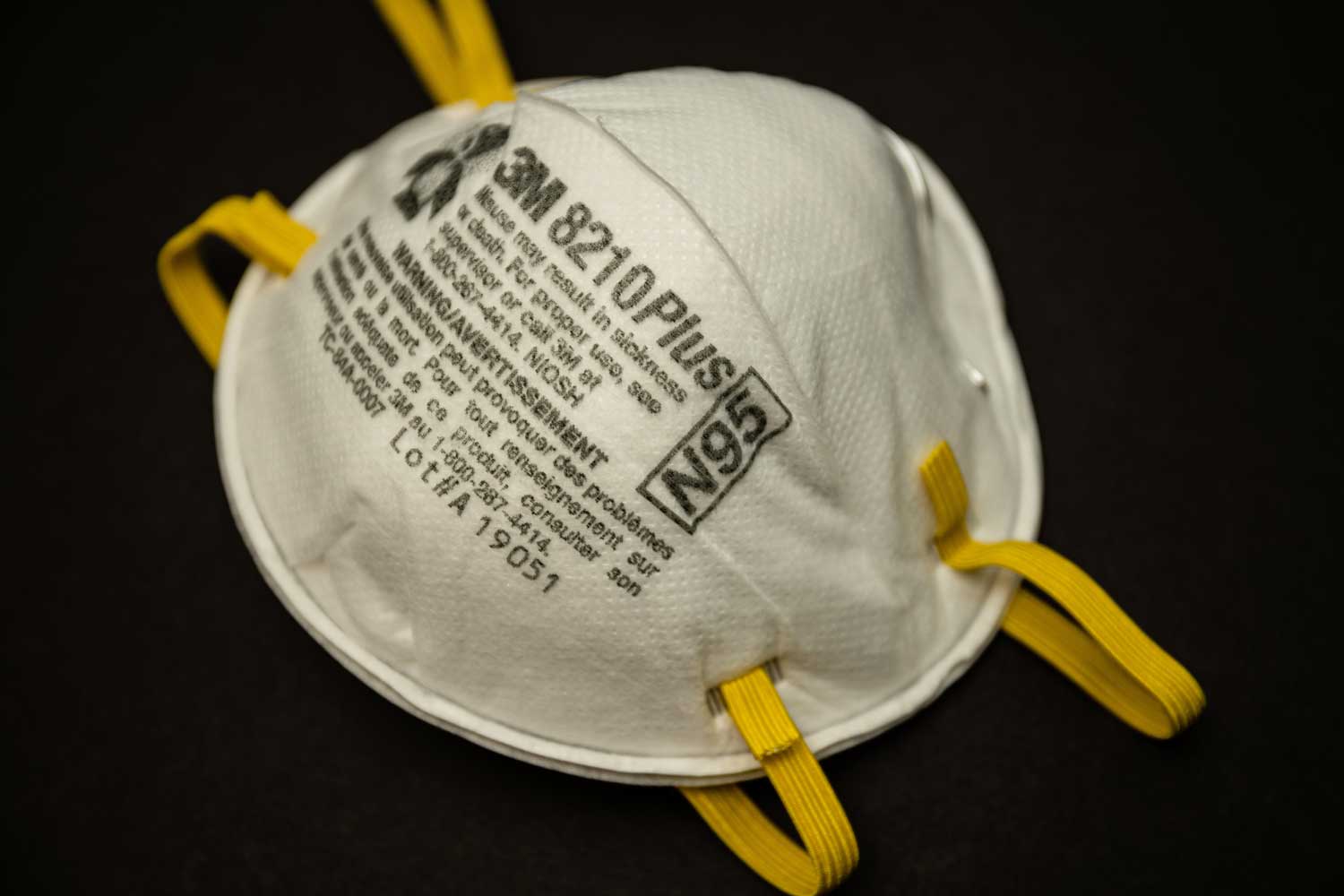

Personal protective equipment (PPE) is key for hospital workers as they treat patients with COVID-19.
The pandemic has led to an increased need for N95 respirator masks that cover healthcare workers’ mouth and nose and serve as filters against virus-containing droplets. These masks need to fit properly or they won’t do their job. To ensure proper fit and filtration of particles, each individual must undergo a 3M fit test.
Kits for the fit testing of N95 respirator masks consist of a hood and collar to cover the user, a nebulizer, and two sensitivity/sweet test solutions. During the test, the user wears the hood and the N95 mask; then, the nebulizer is connected to the hood as the solution is dispersed while the user does a range of different motions. The solution has a sweet taste, so if at any point during the testing a user can taste the solution, adjustments are made to the fit of the mask.
As COVID-19 spread, test kit demand quickly rose, but production was bottlenecked and supplies went on backorder.
A team of students and faculty from Michigan Engineering, the U-M College of Pharmacy, and U-M Occupational Health Services (OHS) at Michigan Medicine stepped in to find a creative solution.
“This project aimed to evaluate an alternative testing approach through locally sourced alternative components that still met the current standards of care. The creation and verification of this alternative testing equipment allowed us to expand the hospital’s testing capabilities and meet the hospital’s current testing demands,” said Chris Argenti, a mechanical engineering master’s student who worked on the project.
In place of the collar and hood, the team recommended PAPR hoods that could be found at U-M labs and industrial supply houses. Instead of nebulizers, they suggested medical nebulizers, which are found in pharmacies. Lastly, for the solutions, the team recommended a sodium saccharin solution, which is a sugar alternative that can be diluted to the same potency as other test kits.
The team was able to make necessary adjustments to the recommended items in-house. For example for the hood construction, they added a fit collar for a better seal and added a hole for the nebulizer to fit into to release the solution.
The team gained feedback on their designs and worked with OHS to test the created kits. They were able to confirm that the fabricated alternative nebulizers had repeated success during sensitivity testing. The nebulizers were paired with existing nebulizers for immediate use in the fit testing process. The current supply of hoods is adequate at the present time, so the team created three extra hoods and confirmed their success in fit testing. These hoods are now on reserve at OHS in case they’re needed. U-M Pharmacy will be mixing the solutions for the nebulizers appropriately for the sensitivity testing.
“This project allowed us to double the testing capacity of OHS to fit more hospital workers with N95 masks faster,” said Matthew Hildner, a third year mechanical engineering PhD student on the team.
“Being a part of the mechanical engineering department at the University of Michigan has given me access to the resources and skills to quickly prototype and provide solutions to aid in the fight against COVID-19,” explained Argenti. “The process required different aspects of my education here at U-M. Everything from designing the testing kits and utilizing alternative materials for scarce parts, to implementing the designs at the Wilson Center and performing validation testing at the hospital to confirm performance.”
Chris Argenti expressed it best when explaining his work on this N95 project, “The University of Michigan community is strong and supportive of one another. It has been a pleasure working with the U-M hospital to help implement tools to help them alleviate pain points during this crisis. When we work together across disciplines, it allows us to accomplish so much more and help save lives.”
This project was a collective effort across the university with contributions from Chris Gordon – Wilson Student Team Project Center, Amy Cohn – Center for Healthcare Engineering and Patient Safety, Tom Mann – Occupational Health Services, Drue Stout – Occupational Health Services, Albert Shih – Mechanical Engineering, Chris Argenti – Mechanical Engineering, Matthew Hindler – Mechanical Engineering, Kathleen Stringer – College of Pharmacy, Cora McHugh – College of Pharmacy.